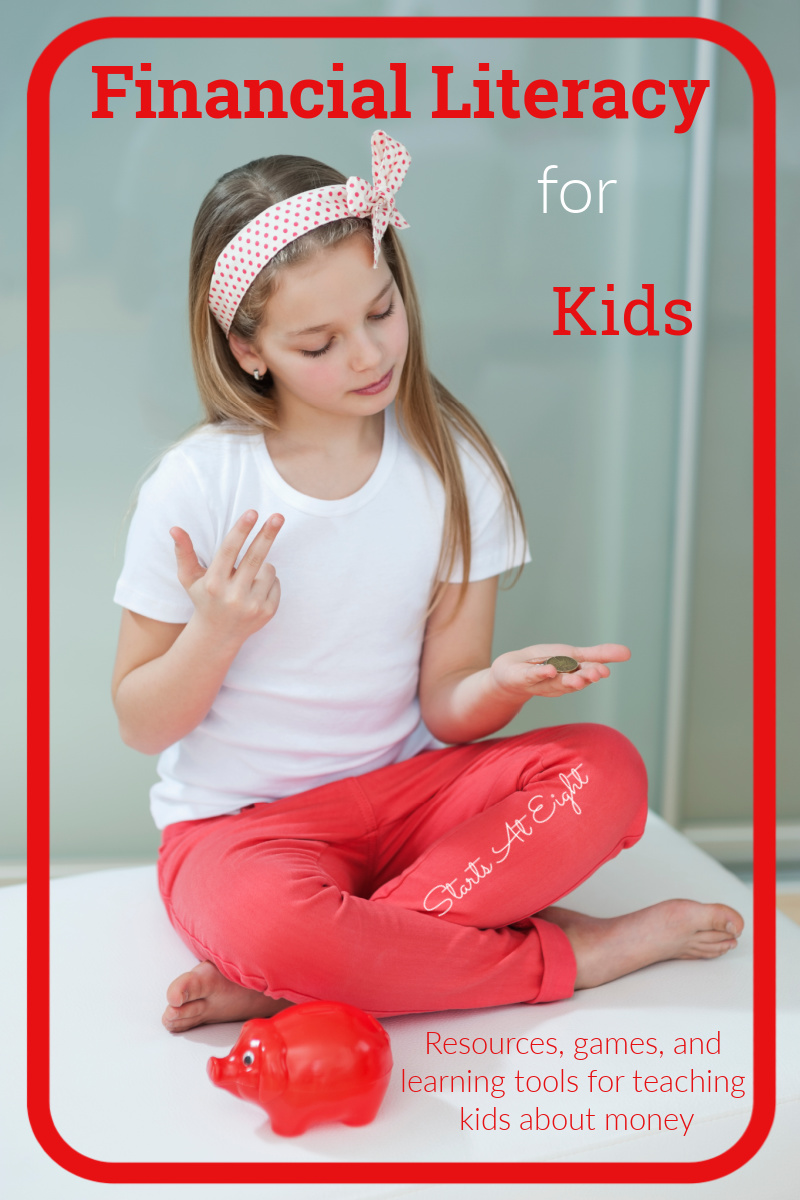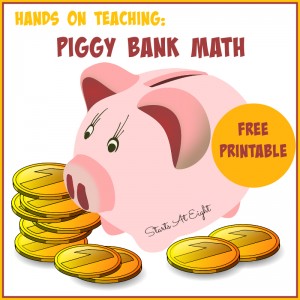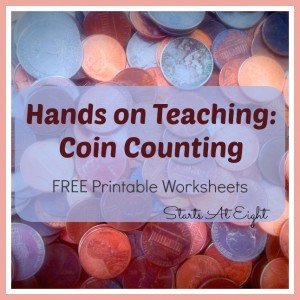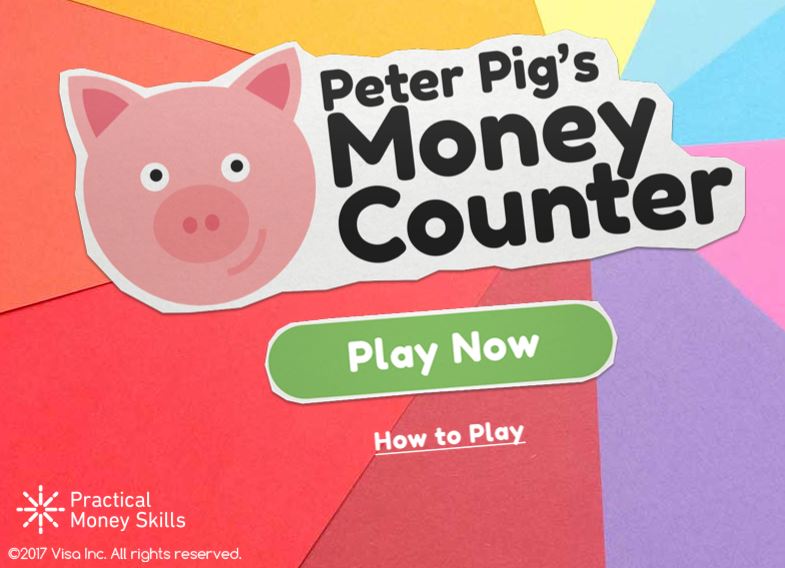Financial Literacy for Kids
Money and finances are a big part of adult life. Money is something you are exposed to as a child. Kids play with toy kitchens and cash registers, exchanging money for food items and more. Given these beginning opportunities, teaching financial literacy for kids is something that can begin at an early age.

Financial Literacy for Kids
“Financial literacy,” you say?
You think, “but my child is only five!”
Truth be told it is never too early to start demonstrating and teaching your children how to manage their money.
Unfortunately, I am pretty sure if you were making a list of important things to teach your children, financial literacy wouldn’t make the list. You would more likely think of things like potty training, manners, learning to read, math skills, etc. However, money sense is arguably one of the most important skills you can teach them to aid in their future success.
When is the Right Time to Start?
As soon as your child starts asking for things, the first lesson they must learn is that those things cost money, and money has value. When you spend that money, it is forever gone.
Would you be surprised by the fact that most children understand by age three that coins and bills can be exchanged for things, like say that piece of candy or toy new toy that they want?
Click on the images below for some fun an practical ideas and printables for working with coins.
Then by the age of six or seven they can even better grasp the money concepts of earning, and saving to go along with that spending instinct!
Teaching children the skills to be money smart is a process that happens over time. Starting at an early age with simpler concepts and working up to the more complex ones as their age and cognitive ability will allow. The skills lies in learning (or teaching) the value of saving, and of spending conscientiously and understanding the difference between wants- the just for fun stuff, and needs- the necessary expenditures.
Peter Pig’s Money Counter
Here is a fun game for kids ages 5-8. In this interactive game, kids practice identifying, counting and saving money while learning fun facts about U.S. currency. After completing the game, players are rewarded with a trip to the virtual store to buy accessories within budget and dress up Peter Pig in fun scenes.
Allowance Basics
A good way to help your child learn how to handle money on their own is by giving them an allowance.
Somewhere around the ages of 5-7 have a conversation with your children concerning money, include your own values and beliefs concerning money.
Set up a fixed allowance amount and plan with your child how that money will be allocated. For example, a common measure is $1 per year of age, thus $7 a week for a 7 year old, $14 a week for a 14 year old.
You can then discuss managing the money by designating to certain things. For example, 40% toward spending, 40% toward short-term saving (new video game, bike, toy), and 20% toward long-term savings (phone & bill when older, car, college).
You could also lessen one or more of these and add in something like a percentage for charity or a giving back project of some kind. Lastly be sure to define what they are expected to pay/save for. You pay the mortgage, electric, groceries etc, but they pay for special snacks they want, toys, etc.
In this post I am referring to younger children. If you would like tips and ideas for the teenage/high school years you can check out my article called Money Management for Teens.
Finding Opportunities to Teach
Taking your children to the grocery store and involving them in looking at the prices and talking what is more or less value for your money is a great way to get them involved and more aware of the cost of things. For instance if your five year old wants a candy bar they can find it and check the price. Do they have enough money? How much do they need to save to get it? Or how much money will they have left after buying it.
How about the bank? Around the age of 10 you can take them in to set up their own savings account (check with your local branch concerning their guidelines). Then maybe once a month you can take your child to deposit the money from their weekly allowance that was set aside for savings and allow them to keep the ledger for the account.
It is important to allow your children to spend their money as they choose, within your guidelines. They need the opportunity to make mistakes and learn from them. When my oldest was 9 or 10 she just had to have this oinking pig that was all the rage at the time. I warned her about its lack of usefulness and how she might feel about spending $12 for something she may not play with very long. Wouldn’t you know that a month later it was heading to the garage sale pile with high hopes of recouping some of the money spent on it!
Above all, talk to your kids about money. They see us handling and using money every day but if we don’t talk to them about the what, how, and why, then they will miss out on many wonderful learning opportunities.
Financial Literacy Resources for Use With Young Kids
Jump$tart Coalition is a national coalition of organizations dedicated to improving the financial literacy of pre-kindergarten through college-age youth by providing advocacy, research, standards and educational resources. Jump$tart strives to prepare youth for life-long successful financial decision-making.
Sand Dollar City – You create a character and enter into a virtual reality to learn about managing expenses, bank accounts, credit cards, and saving money by making decisions and experiencing the consequences of those decisions.
Hands On Banking – This award-winning financial education program, is available in English and Spanish, and offers free non-commercial content – lesson plans, instructor guides, student courses, activities, lessons, quizzes and much more. This site has courses designed just for elementary, middle, and high school so you can choose the appropriate level for your child!
For me, For you, For later ~ First Steps to Spending, Sharing, and Saving is presented by Sesame Street and is a bilingual multimedia program created to help families share experiences in developing financial basics that will impact their children now and in the future.
Board Games such as:
- The Game of Life
- Pay Day
- Monopoly Jr.
- and a favorite for the younger ones in our house, The Allowance® Game
are great ways for your family to be together, have fun and learn about money all at the same time!






June 29, 2021 @ 9:16 am
Thank you! Very informative! I think the earlier the better to start teaching financial literacy, even a little bit at a time. There are so many children’s videos on YouTube about this, my child is very interested usually, although he probably doesn’t understand much yet.